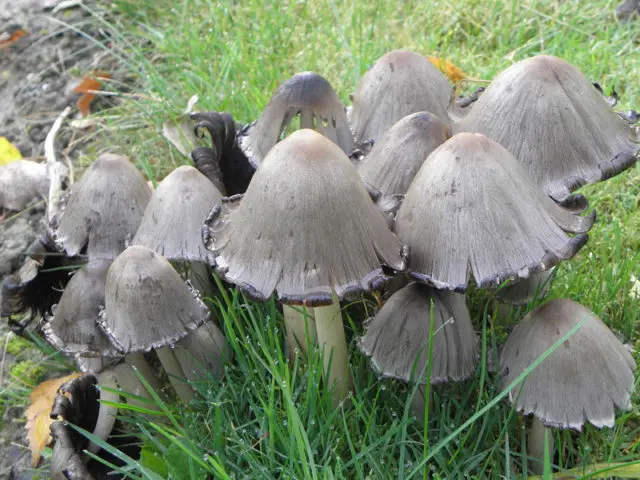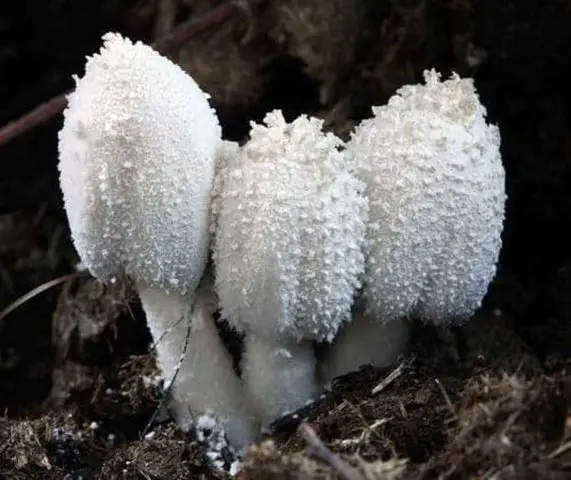Contents
The woodpecker is an inedible, hallucinogenic mushroom of the Psatirellaceae family. It grows among deciduous trees in fertile soil. It begins fruiting from the beginning of August, it lasts until the first frost. Since the species is not eaten, you need to know a detailed description, view photos and videos.
Where does woodpecker grow
Woodpecker dung beetle can be found on rotten wood. It prefers to grow on nutritious soil, both on the plain and on a hill. Woodpecker dung beetle begins to bear fruit from the end of summer, you can see the mushroom in the forest until the first days of November.
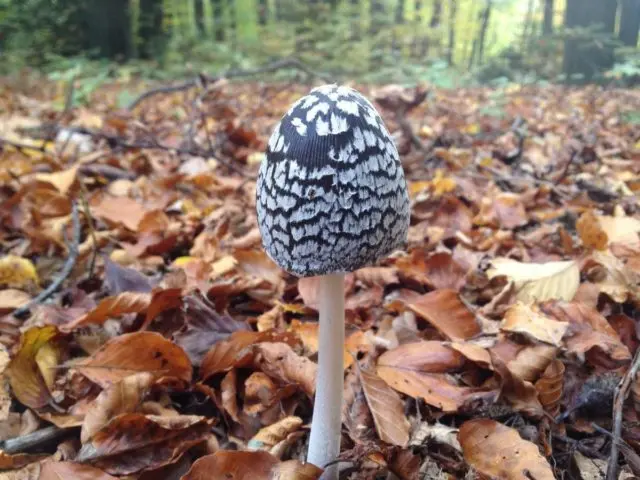
What does a woodpecker look like
The hat reaches 10 cm and has the shape of a cylinder or cone at a young age, then it takes the form of a bell. The edges of old specimens rise up, exposing the lamellar layer.
A young woodpecker completely hides a snow-white velvety cover, as it grows, it collapses, leaving large whitish flakes. The surface is covered with a smooth white skin with pronounced dark stripes. The pulp is tender, thin, white or pale pink.
The spore layer is formed by convex, non-fused plates. In young specimens, they are whitish, with age they become gray-yellow and dark brown. Woodpecker dung beetle reproduces by elongated spores, which are located in a dark brown or black powder.
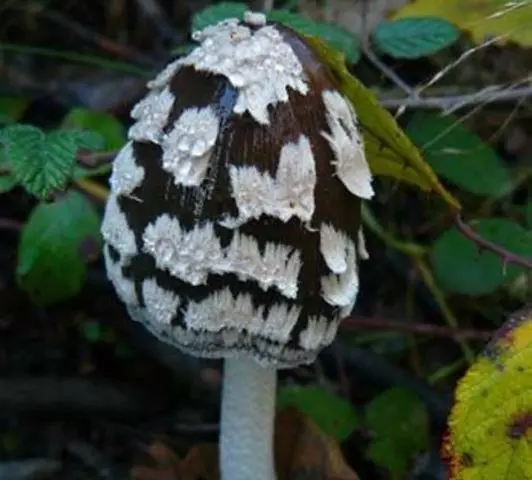
The dense stem is high, reaches a height of 15 cm. The shape is cylindrical, thinning from above and thickening towards the base. The surface is covered with a whitish skin with rare flaky scales. There are no toe rings. The flesh of the woodpecker dung beetle does not change color when mechanically damaged.
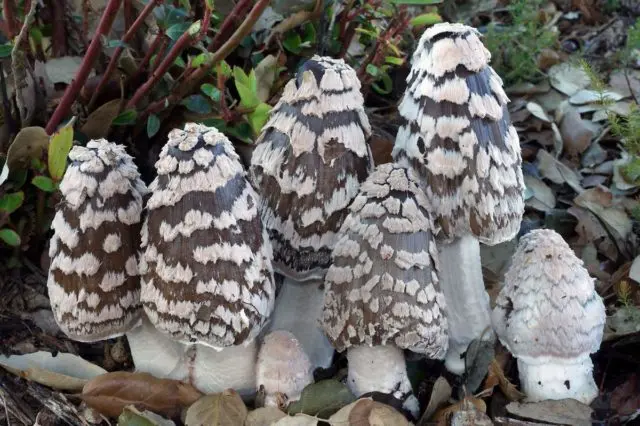
Is it possible to eat woodpecker
This representative of the forest kingdom is considered hallucinogenic. The pulp exudes a characteristic resinous smell, the taste is absent. When using this type, food poisoning, clouding of the mind, up to loss of consciousness can occur.
But if the woodpecker somehow got on the table, you need to be able to distinguish the symptoms of poisoning and provide first aid.
Similar species
Woodpecker dung beetle coprinus picaceus has a beautiful appearance, so it is very difficult to confuse it with other species. But inexperienced mushroom pickers manage to confuse it with such representatives as:
- Dung beetle gray or inky – an inedible fellow with an ash-gray cylindrical hat and a long hollow leg. It grows in deciduous forests, begins fruiting from the end of summer. When eaten, it causes stomach upset.

- Shaggy dung beetle – an edible representative of the forest kingdom. But, in order not to harm your body, only young fruiting bodies are collected, while their plates are painted whitish. You can recognize the mushroom by its oblong shape, painted white with large scales. With age, they become dark gray or black. They grow in large families in the city and in basements. Prefer fertile, nitrogenous soil. They bear fruit from spring until the first frost.

- Snow-white dung beetle – an inedible representative with an ovoid hat covered with a white powdery coating. The whitish leg is long, swollen, rough. Since the appearance is very attractive, and there is no unpleasant smell, many people mistake it for an edible specimen. If signs of intoxication appear when eating this type of food, it is better to consult a doctor.

Symptoms of poisoning and first aid
Woodpecker dung beetle is an inedible, hallucinogenic species. When eaten, it causes gastric upset and clouding of consciousness. When picking mushrooms, it is better to pass by unknown specimens, but if this species accidentally hit the basket and then on the table, then you need to know the signs of poisoning. Symptoms depend on the amount of mushrooms eaten and are divided into mild, moderate and severe stages.
Light degree:
- nausea, vomiting;
- pain in the epigastric region;
- diarrhea up to 20 times a day.
The first symptoms appear 1-2 hours after eating. In the process of dehydration, the condition worsens, up to fainting.
Average degree:
- temperature increase;
- cold, clammy sweat;
- yellowness of the skin;
- increase baked.
These symptoms appear after a few days if first aid was not provided or if the woodpecker was consumed along with alcohol.
Heavy:
- agitation or lethargy;
- hallucinations;
- lowering blood pressure;
- cardiopalmus;
- muscle pain;
- convulsions;
- transition to an unconscious state, up to a lethal outcome.
If signs of poisoning appear, it is necessary to provide first aid in a timely manner. Before the ambulance arrives:
- wash the stomach;
- give activated charcoal (1 tablet per 10 kg of body weight);
- if there is no diarrhea, give laxatives;
- to improve blood circulation to the legs and stomach put heat;
- open the vents and free the victim from tight clothing for a better supply of fresh air;
- give the patient as much water as possible.
Conclusion
Woodpecker dung beetle is an inedible, hallucinogenic representative of the mushroom kingdom. It grows among deciduous trees, on soil enriched with humus. It comes into fruiting at the end of summer. When collecting mushrooms, it must be remembered that inedible mushrooms cause food poisoning, therefore, when you see an unfamiliar specimen, it is better to pass by.










